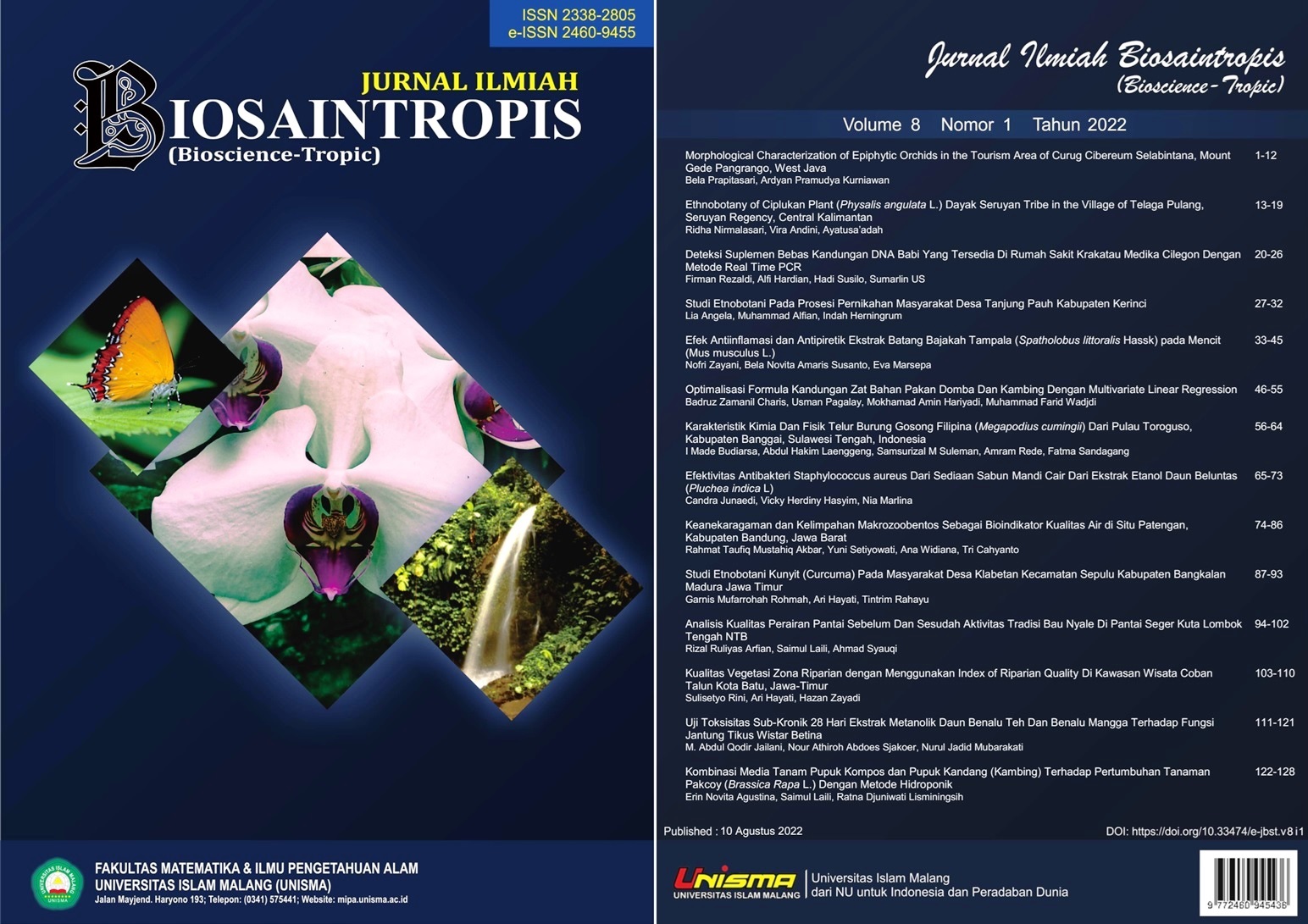Morphological Characterization of Epiphytic Orchids in the Tourism Area of Curug Cibereum Selabintana, Mount Gede Pangrango, West Java
Main Article Content
Abstract
The Curug Cibereum tourist area located in Selabintana, Sukabumi, is part of the Gunung Gede Pangrango National Park which consists of various types of orchids. This study aims to determine the types of epiphytic orchids in the Cibereum Curug Path based on the morphological characterization of epiphytic orchids, both stems, leaves, and flowers. The results of the study found as many as 31 species of epiphytic orchids from 11 genera. Based on the morphological observations of stems, pseudobulbs, leaves, and flowers on each type of epiphytic orchid, each has its characteristics. Observation of stem growth morphology found monopodial and sympodial orchids. The stems are found to belong short and do not even have stems but have pseudobulbs. The shape of the pseudobulb was found to be round, flattened, oval, and oval. Then for the shape of the leaves found lanceolate, oval, needle, and ovoid. As for the shape of flowers, each type has various shapes and colors. Some are big or small according to the species
Keywords: Epiphytic Orchid, Cibereum Waterfall, Morphology, Characterization, Pseudobulb
Article Details

This work is licensed under a Creative Commons Attribution 4.0 International License.
Copyright and Attribution:
Jurnal Biosaintropis (Bioscience-Tropici s licensed under a Creative Commons Attribution-NonCommercial 4.0 International License (CC-BY). The work has not been published before (except in the form of an abstract or part of a published lecture or thesis) and it is not under consideration for publication elsewhere. When the manuscript is accepted for publication in this journal, the authors agree to automatic transfer of the copyright to the publisher.
Permissions:
Authors wishing to include figures, tables, or text passages that have already been published elsewhere and by other authors are required to obtain permission from the copyright owner(s) for both the print and online format and to include evidence that such permission has been granted when submitting their papers. Any material received without such evidence will be assumed to originate from one of the authors.
Ethical matters:
Experiments with animals or involving human patients must have had prior approval from the appropriate ethics committee. A statement to this effect should be provided within the text at the appropriate place. Experiments involving plants or microorganisms taken from countries other than the authors™ own must have had the correct authorization for this exportation.

